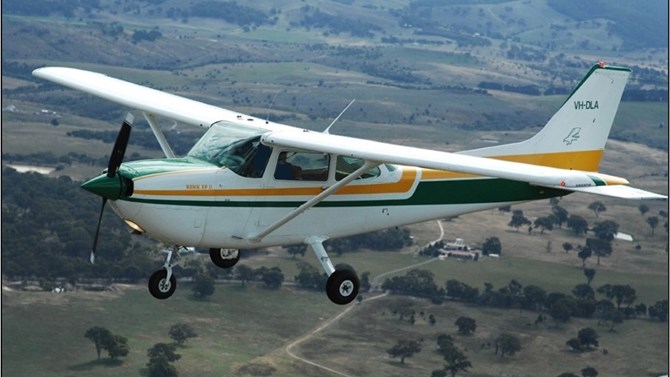
An ATSB investigation has concluded that a Cessna R172K crashed, killing two on board, because the pilot attempted a turn too slowly and at a comparatively high angle.
The pilot, 31 and his passenger, just 18, were conducting powerline inspections near Canberra when the aircraft, VH-DLA, entered a spin on 13 April 2021.
Operator Oberon Air has subsequently updated its low-level flying procedures to help prevent a similar accident from happening again.
The ATSB’s director of transport safety, Stuart Macleod, said the investigation reinforces to pilots the importance of managing airspeed and bank angle to prevent stalling.
“This is particularly important when operating in close proximity to the ground, such as conducting low-level air work, as well as during take-off and landing, as recovery may not be possible,” he said.
MacLeod noted the pilot’s operating handbooks for most light aircraft, including the accident Cessna R172K’s, provides stall speed guidelines to avoid a wings-level stall.
However, pilots should be cognisant of the raised stall speed when operating turns.
“In a bank, the vertical lift component is reduced, and so pilots must pull back on the control yoke to maintain altitude,” he said.
“This increases the angle of attack of the wing, and if the angle of attack reaches a critical angle, loss of lift and increased drag occurs, and the wing will aerodynamically stall.”
The incident took place to the north of Sutton township, NSW, when the aircraft was around three hours into its flight, inspecting a powerline adjacent to Tallagandra Lane.
Witnesses observed the aircraft flying low above the trees before it commenced a left turn that continued into a steep descent before crashing into the ground.
The ATSB said the aircraft entered a spin at a height too low for recovery and was eventually destroyed.
Following the accident, Oberon Air amended the training and checking section of its operations manual to incorporate threat and error management and situational awareness training modules for powerline low-level survey operations.
Emergency services remain at the scene of a light plane crash that’s killed two people on board at Sutton, north of Canberra. The aircraft, which belong to Essential Energy, took off from Canberra Airport @7NewsAustralia pic.twitter.com/i6qwxfymMo
— Olivia Leeming (@olivialeeming) April 13, 2021
The amendments enhanced existing topics in the operator’s crew resource management training and stipulated learning outcomes and assessment criteria specific to threat and error management and situational awareness.
Oberon also plans to modify its aircraft to include an angle of attack indicator and a g-meter with recording and data download capability.
“These will not only supplement the aircraft’s stall warning device by providing additional warning of an impending stall, but will allow for a record of the maximum and minimum in-flight readings to be downloaded post flight for review.”
















james
says:Good article –